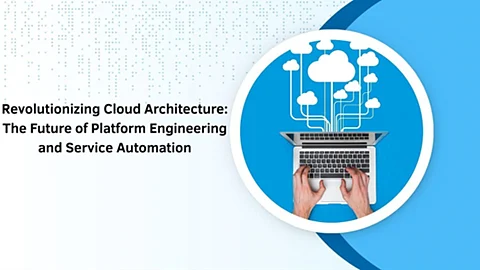

In an era in which businesses rely more and more on the cloud to drive operations, the complexity of cloud infrastructure management and optimization has never been sharper. With businesses adopting multi-cloud strategies and moving further into advanced technological environments, they are discovering the transformational power of platform engineering and service automation. In his analytical piece, Baba Prasad Pendyala explains how these technologies are revolutionizing enterprise cloud architecture and providing businesses with unprecedented scalability, efficiency, and resilience.
Platform engineering is also rapidly evolving, with Platform-as-a-Service (PaaS) leading the way. Unlike legacy Infrastructure-as-a-Service (IaaS), which provides raw computing power, PaaS provides full platforms that make application development and deployment easier. This shift reduces the cognitive load on developers to allow them to focus on delivering customer value instead of infrastructure. Research shows that organizations employing PaaS experience revolutionary operational benefits, with some reporting as much as 973 times more deployments. These gains also boost application reliability, with best-in-class teams realizing 99.9% availability, compared to 94.3% in less advanced implementations.
One of the most significant trends in platform engineering is the advent of Internal Developer Platforms (IDPs). IDPs allow development teams to be more independent while upholding organizational standards and governance rules. By supporting self-service, IDPs are transforming the way developers interact with infrastructure, making it possible for them to achieve faster innovation cycles and break free from operational bottlenecks.
Organizations with well-established IDP implementations also achieve increased developer happiness and improved productivity. Automation of processes such as provisioning the environment and service management through catalog results in streamlined work streams and reduces manual intervention such that the team can focus on the true need: delivering value and creating for the customers. As a collateral benefit, business releases products quickly, experiences increased consistency of delivery, and achieves improved cross-functional collaboration.
Service automation is another cloud architecture corner. Companies can automate processes, reduce errors, and reduce manual intervention with the aid of event-driven automation frameworks and better orchestration platforms. Service automation has evolved from basic script-based automation to sophisticated platforms capable of handling complex workflows in distributed systems.
Automation by AI-fortified intelligence and foresight is driving operational excellence. Smart automation platforms not only give automation of mundane tasks but also predict potential concerns even before they are issues to the services. The combination of AI in service automation enables the problems to be solved faster and with greater precision, reducing downtime as well as bringing better customer satisfaction.
Besides, event-driven architecture is enhancing the responsiveness of service management systems. This shift is enabling businesses to break down silos in operations and achieve a more integrated, responsive means of managing cloud environments. Organizations implementing these event-driven automation practices have delivered services up to 71% faster and solved major incidents 49% faster.
Merging DevOps and Site Reliability Engineering (SRE) practices enhances system reliability and performance. Organizations that merge on these strategies experience fewer catastrophic failures and increased uptime, with one recording 89% fewer production failures. With the addition of monitoring and observability, they can better look into system behavior and fix issues before they happen. This synergy between ops and dev teams accelerates innovation and builds more resilient systems, resulting in overall improved operational results.
Machine learning and AI are revolutionizing cloud operations with optimized resources and less downtime. With historical trends, AI-powered platforms enhance performance and enable predictive automation. Organizations that use AI for anticipatory problem-solving have observed a 73% rise in the reliability of services and a 67% reduction in unplanned disruptions. With this predictive capability, organizations can correct potential issues in an early stage, leading to more seamless cloud environments and better decision-making.
As cloud adoption continues to grow, edge computing convergence is the next frontier in platform engineering. More and more organizations are now extending their platform engineering prowess to the edge locations so that they can have consistent deployment and management in the cloud and the edge locations. This is imperative because businesses would like to manage data closer to where it's being generated, improving application performance and reducing latency.
Plugging edge computing into the cloud model of infrastructure has its own challenges, namely how to achieve continuity of management in distributed environments. However, these challenges will be overcome by companies that end up being rewarded with more operational consistency and less complexity, driving greater deployment efficiency and cost savings in operations.
Overall, Baba Prasad Pendyala cites that innovations of platform engineering and automation technology transform cloud architecture for enterprise. With the utilization of these technologies, businesses transform how they do things with legacy infrastructure to boost innovation, operating nimbleness, and customer delight, keeping them aligned to thrive in the long term within the rapidly changing digital economy.
